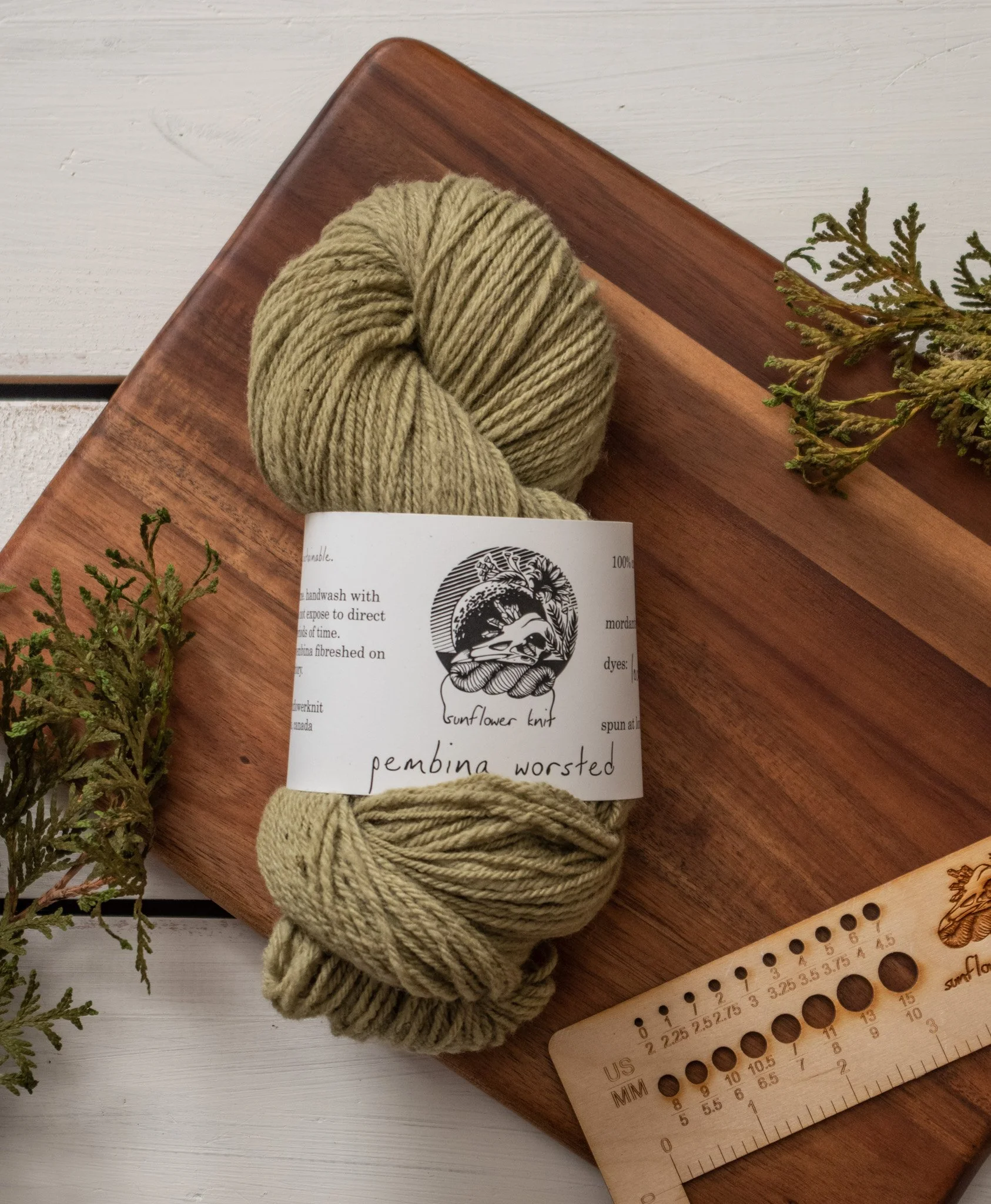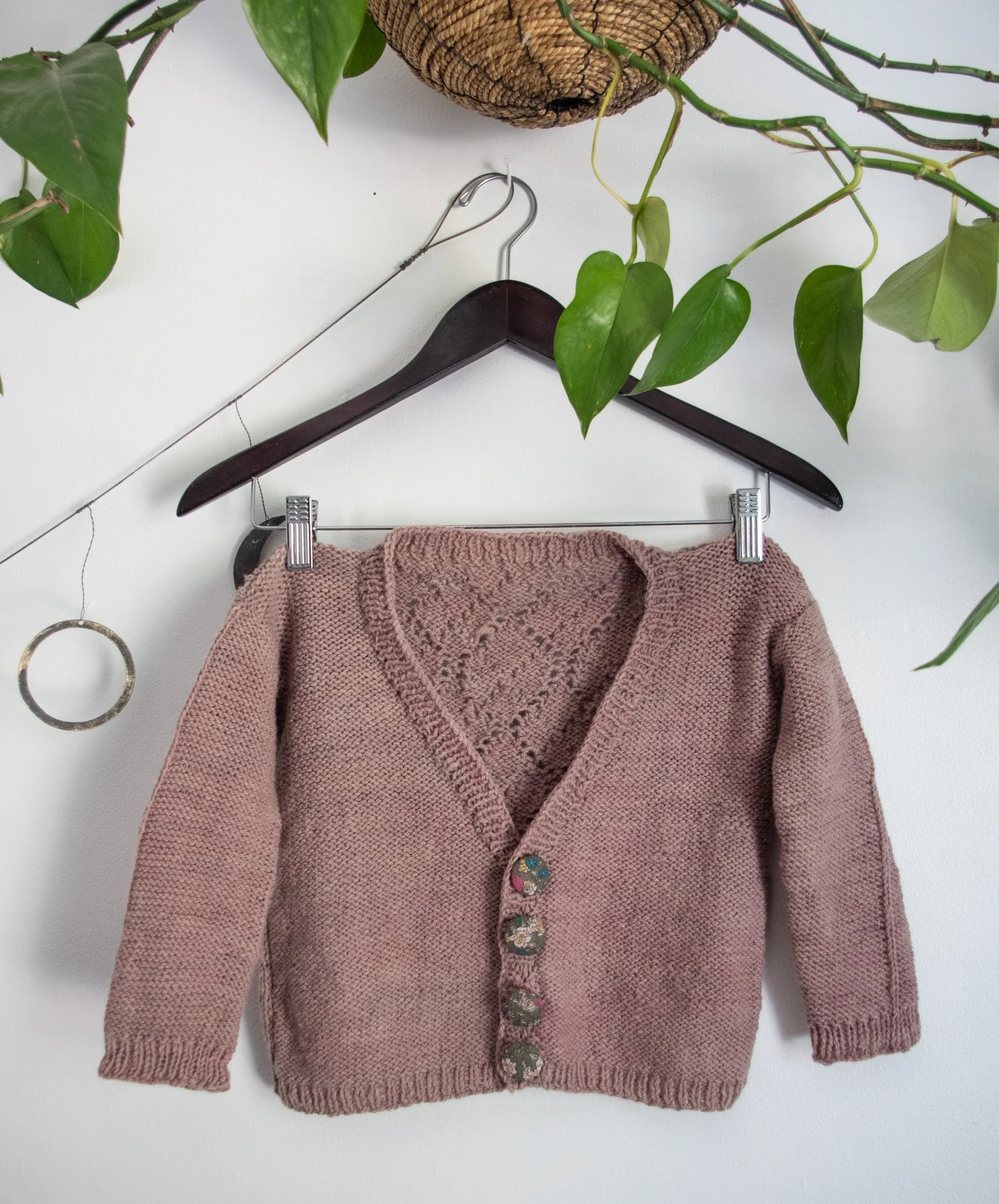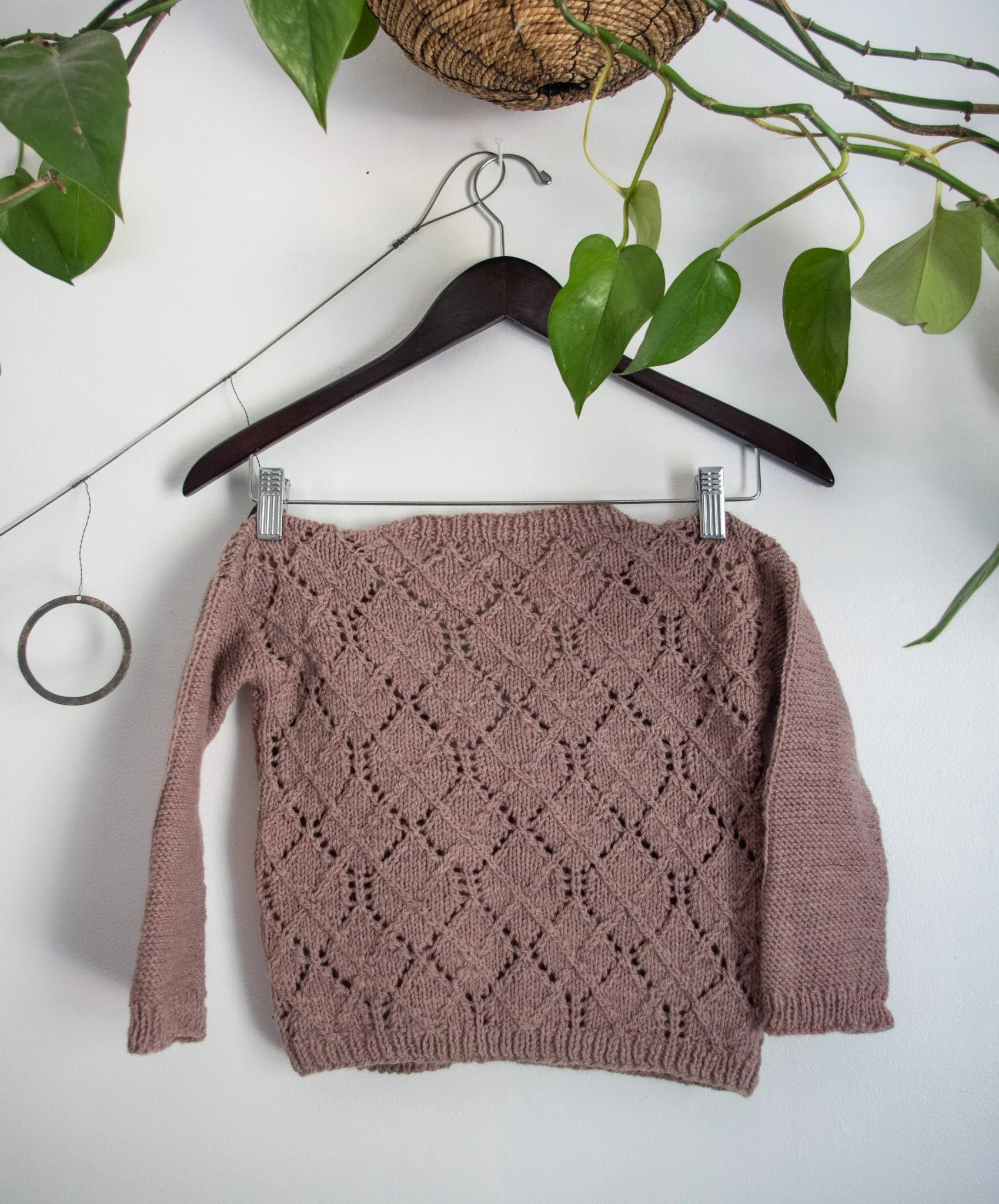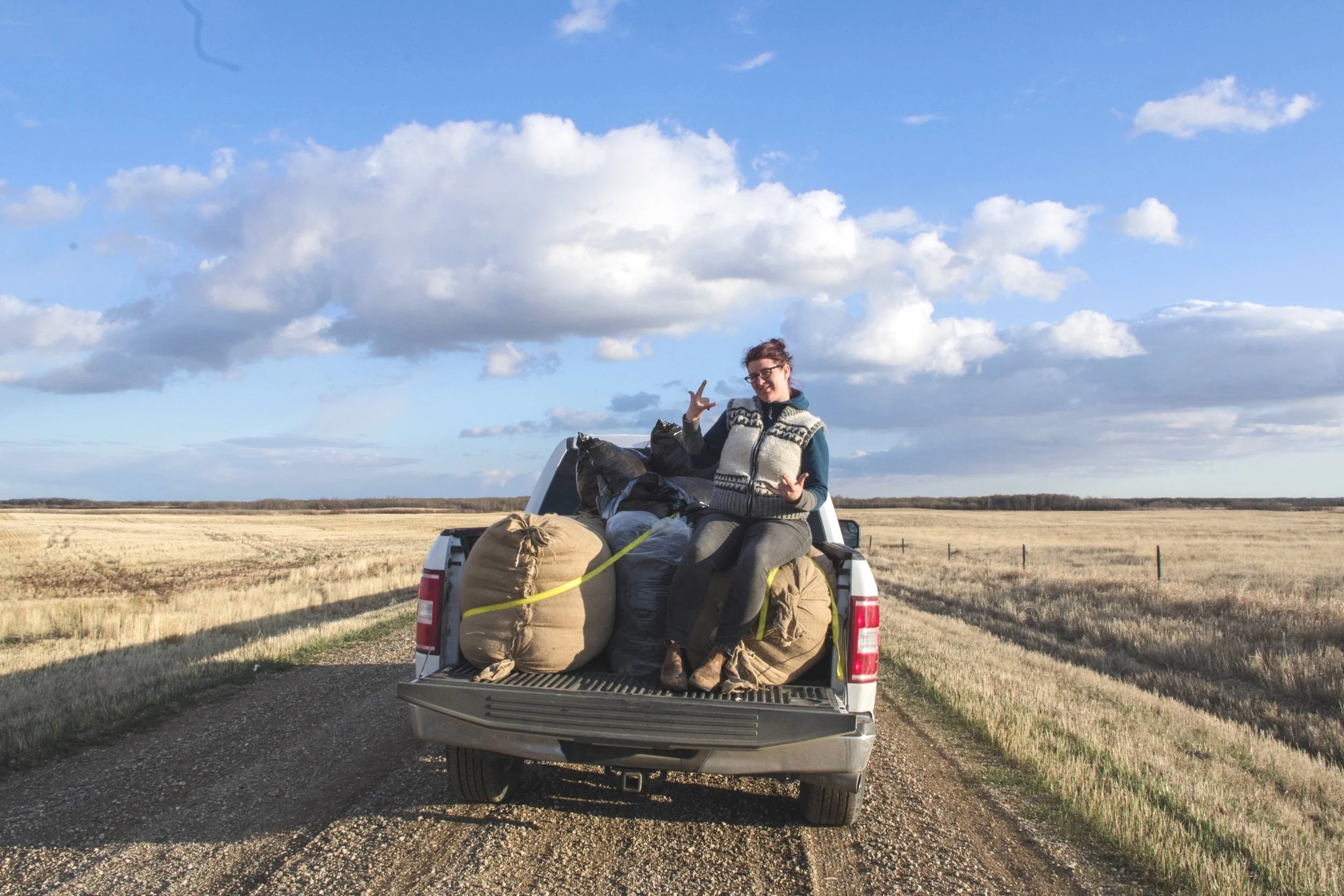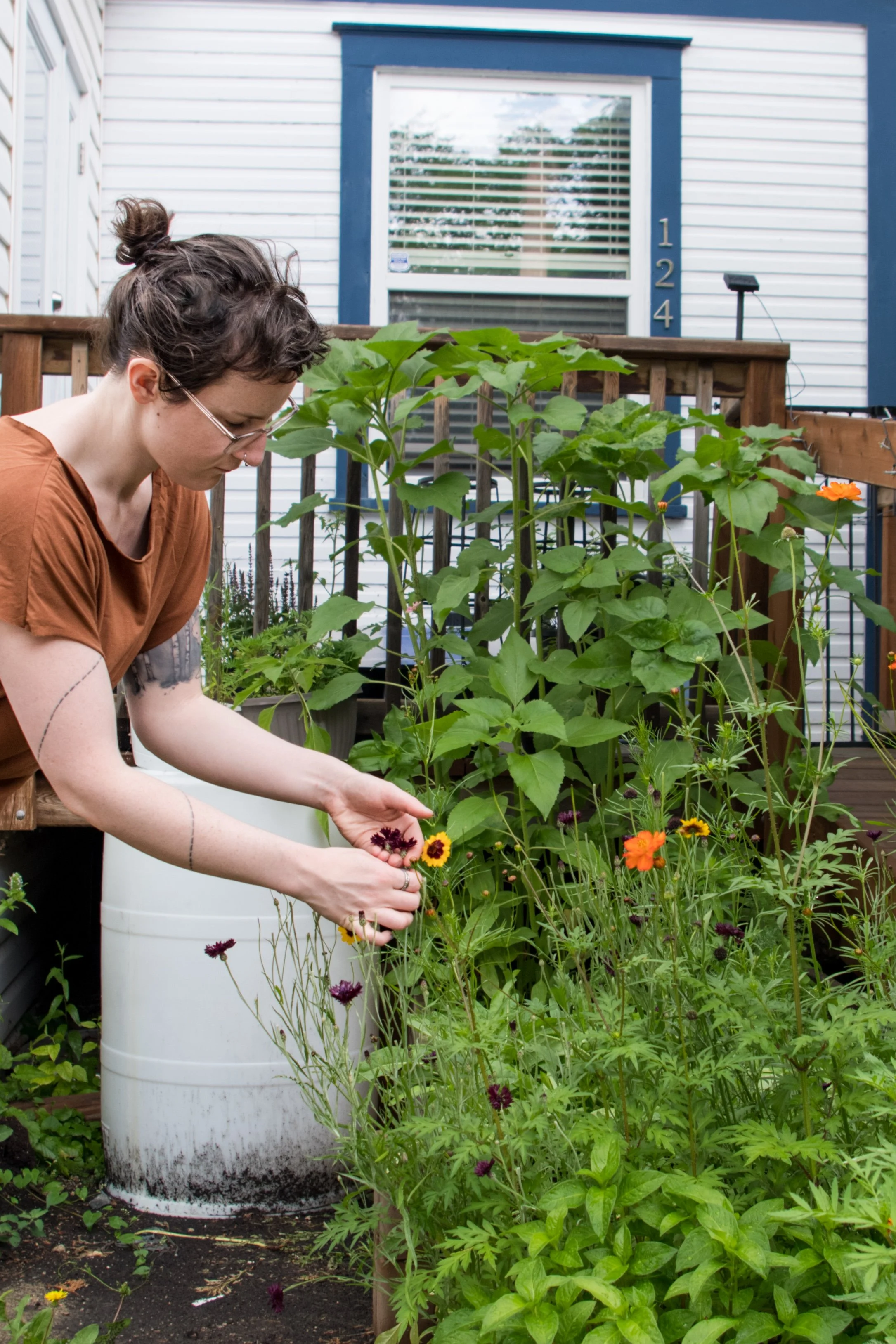introducing: pembina worsted (the newest sunflower knit core yarn)
after a comedy of errors involving a 2-month shipping snafu with a big chunk of my stock, i had the opportunity to noodle on what i want the shop (and the brand overall) to focus on both right now and moving forward into the future. part of that involved conversations with my good friend, anna hunter of long way homestead, and the result is two brand new yarn bases sourced from our pembina fibreshed! last time, i shared with you the smaller shop exclusive base, red river dk. today, i’m sharing the newest core yarn base for sunflower knit - meet pembina worsted!
about the yarn
pembina worsted is a squishy 3ply semi-worsted yarn made from 100% range wool from farms in manitoba and saskatchewan (targhee and corriedale, to be more precise). i realized in recent months that for my business (the knitting-specific part of my work) to be sustainable, i can’t continue to be so far ahead of where the industry is at to be perpetually out of reach for the regular customer. even though my yarns are actually more of a return to the old ways - direct relationships with farms, spun at local prairie mills, no synthetic or imported fibres, dyed with natural dyes - that’s just not what’s been on the market here in northern north america for a very long time. and as much as i love my lofty woolen spun yarns like pasture and canadian aran, their natural flexibility in gauge makes them a lot less familiar to the average knitter, and there are way fewer patterns written for them. the yarns spun on mini mill machinery have less loft, which makes them more predictable in the way they behave on the needles. so, for this moment in time, i’m retiring my older heavier yarn bases (don’t worry, roots isn’t going anywhere), and pembina worsted is joining the team as the new core heavier yarn base (available for wholesale too!). here’s a wee cedar cardigan in size 3 that i knit up with 2 skeins:
i am totally enamoured with the results, and thinking of all the sweaters in my queue (design and otherwise) that could be whipped through quickly thanks to its worsted weight. i work so much with fingering weight that i forget how much quicker things go when you’re working with a heavier gauge. maybe some colourwork projects will pop up over the fall and winter…
about the wool
with anna on the road home after we picked up wool for the mill from the targhee and corriedale farmers back in 2019.
pembina worsted is made from 100% wool from manitoban and saskatchewan farms - it uses a blend of targhee and corriedale, both of which are sturdy range wools with a lovely combo of softness and durability. they also take natural dyes very well. i actually had the chance to visit the farms way back before the pandemic during a road trip with anna when we both were teaching at a knitting retreat in saskatchewan. the flocks are primarily meat flocks, just like the majority of sheep raised across canada. one of the major ongoing projects for many of us in the canadian fibreshed is raising awareness of and value of canadian wool so that farmers can a) prioritize raising good wool in their genetics and maintenance without loads of extra cost or labour; b) get paid properly for their wool; and c) connect with the commercial market to sell their wool, both domestically and internationally (but not in the current method of shipping it all for pennies overseas to be processed into carpet or other heavy textiles).
to be clear, not all wool is good wool for wearing as clothing. but we currently waste a huge amount, all while crafters and makers and industry fashion players import heavily processed superwash-treated fibres with no clear origin, with massive carbon footprints and run through chemical-laden processing that strips the wool of the exact qualities that helped make it so special. natural wool is fire-retardant, anti-microbial, temperature-regulating, has gorgeous stitch definition and structure, is water-resistant, and is fully biodegradable when left undyed or dyed with natural dyes. why, with all those good reasons, would anyone reach for an acid-dyed superwash merino/nylon blend yarn? because they haven’t had the opportunity to learn about the differences, and to try out a wool yarn the way it’s supposed to be. (also, no shitting on merino over here! it’s a lovely wool when you’re working with the fibreshed-method variety and haven’t stripped away its woolly goodness. it also happens to be the absolute worst choice for socks because of its naturally short and soft staples, so y’know, maybe use that skein for a baby sweater or shawl instead.)
about long way homestead & mini mills
want to learn more about mini mills, the machinery used by long way homestead and many other small wool mills across the globe? watch this video from from field to skin to see the machinery in action!
about pembina fibreshed
the pembina fibreshed is my local fibreshed affiliate. you can learn more about the fibreshed movement here and by reading this awesome book. fibresheds are typically defined by geographic borders rather than human borders, so ours is 200 miles around the pembina river, which is primarily in southern manitoba but also extends into western ontario, saskatchewan, and even a bit of north dakota.
wanna work with local dyes?
because this is a smaller batch yarn, i’ve opted to dye it solely with local dyes to keep it a fully certified fibreshed product. if you’re interested in playing with your own local dyes or natural dyes in general, check out:
northern natural dyes recipe e-book, featuring 36 dye plants and recipes for plants growing in zone 3
my digital colour journal in the creative coven community (complete with dye recipes, plant monographs, historical facts, and more)
natural dyeing 101, my online natural dyeing course that’ll get you dyeing plant and animal fibres within a weekend!






